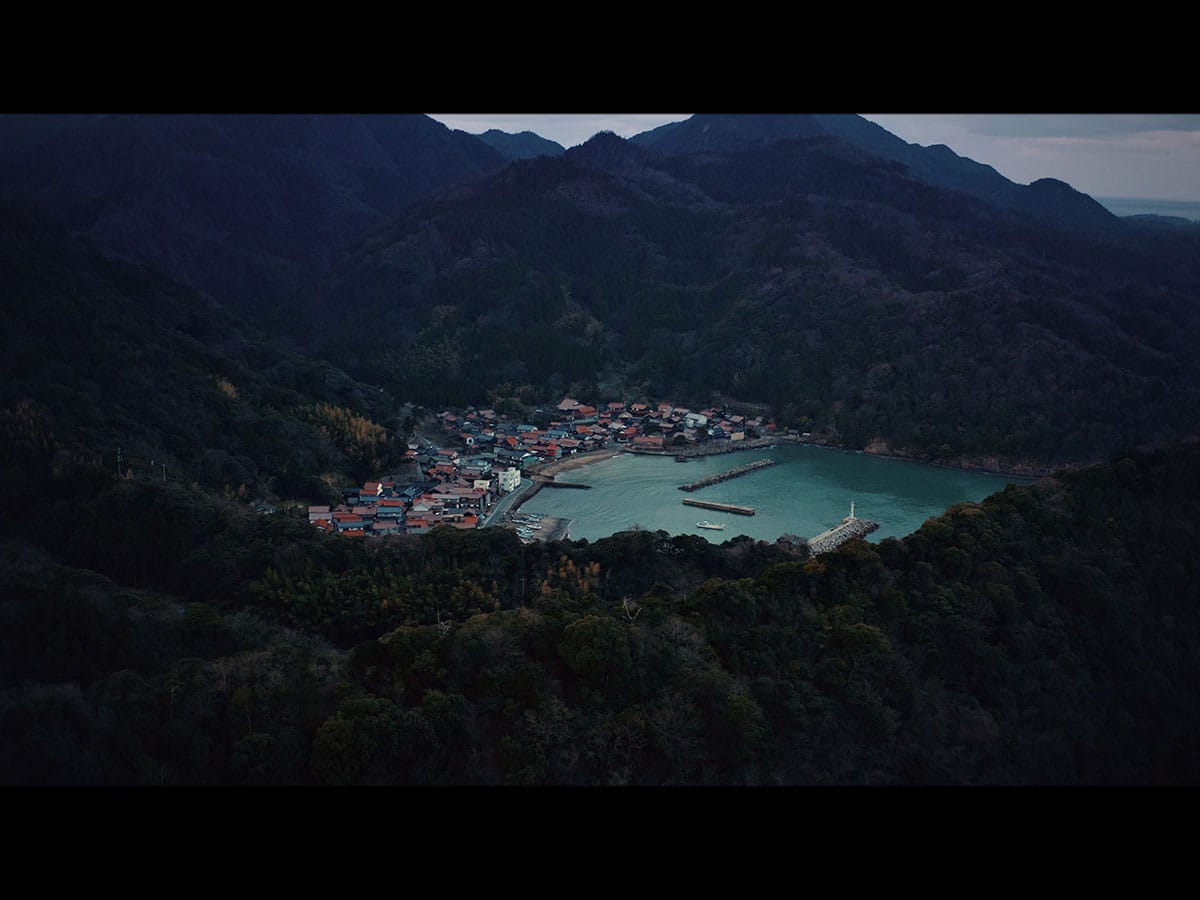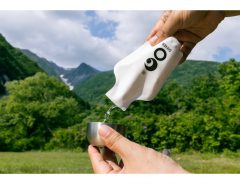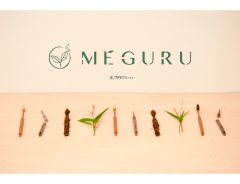
Source: Images from "The Tsubaki Forest," with permission from Jeremy Rubier
Exploring the mysteries of “The Tsubaki Forest,” a short film by Jeremy Rubier
- Tags:
- Camellia / Jeremy Rubier / SDGs / Shiga Atsuo / Shimane / Short Film / sustainable / The Tsubaki Forest / tsubaki
Related Article
-

Karaoke PASELA works on SDGs by cutting food waste in its huge honey toast cubes
-

Birds of a feather: Piplup works as assistant for veteran novelist in manga for Project Pochama
-

GO POCKET sake pouches bring your favorite rice brews to the great outdoors
-

Marutomi Seishi’s ultra-long coreless toilet paper rolls cut waste and reduce carbon footprint
-

Japanese maker releases bamboo toothbrushes in campaign against plastic waste
-

Bulldog’s award-winning razor made with 70% recycled beer bottles now available in Japan


From The Tsubaki Forest, reproduced with permission from Jeremy Rubier
"The Tsubaki Forest" is a new short film by the talented Jeremy Rubier, a French-born director, cinematographer, videographer, editor and composer who travels the world making documentaries, movies and music videos. He is known for short films The Interview (Best Director, Fantasia Film Festival, 2015), Ratri (2019) and Sayo (2020) which won both Best Screenplay and Best Feature at the 2021 Cinefantasy International Fantastic Film Festival in Brazil. Based in Tokyo, he is the founder of DMBZ and his clients range from National Geographic to FILA.
In his inspired short film, Rubier focuses on Shiga Atsuo and his remarkable experience with the tsubaki, known in English as Japanese camellia.
The Tsubaki Forest from Jeremy Rubier on Vimeo.
The Japanese version of the film is available here.
"Shiga Atsuo’s life has been filled with wonderful spiritual experiences and enigmatic encounters. Whilst living on Izu Oshima, he came across the sacred tsubaki tree, an experience that set him on his quest to the Shimane region, the motherland of tsubaki. He now lives with his family in a fishing port nearby the ancient Izumo Grand Shrine. In the wooded hills and forests that traverse the Shimane coastline, the winds from the Japan sea carry salt, and the volcanic soil contains nutrients and metals vital for the healthy growth of tsubaki. Similar to the vineyards that produce the finest wines, the quality of the soil, the terroir, is as important for tsubaki as the climate. Within this peaceful and inspiring landscape, Atsuo strives for a sustainable future for his family and the local community. Welcome to The Tsubaki Forest."
We had the opportunity to interview Shiga and explore some of the mysteries of the man and the sacred tree he fell in love with.
From The Tsubaki Forest, reproduced with permission from Jeremy Rubier
Atsuo Shiga was working in the US with Silicon Valley investment groups and he returned to Japan in 1997. That’s when he came across the tsubaki. He wanted to put his expertise in IT to the service of agriculture, just as he had observed in Californian wine country. Beginning with the mountains near the fishing port of Taisacho-Sagiura 大社町鷺浦, he began working on reviving the tsubaki forest and creating a sustainable way of life.
From The Tsubaki Forest, reproduced with permission from Jeremy Rubier
Tsubaki has been an essential plant for generations. High-quality charcoal and ash derived from the tsubaki plant was used in the Tatara furnace smelting of iron and silver from the Nara period (710 – 794 AD) through to the Edo period.
“Where Tatara was practiced, there are many tsubaki hidden under other trees,” Shiga explains. In these regions where tsubaki was abundant, people pressed tsubaki oil at home until about 40 or 60 years ago.
Shiga's next project is to manage 80 hectares of forest land in Onancho 邑南町 using drones and IT technology to control water usage, crop timing, etc.
However, as he revealed in our interview, Shiga’s real focus is not technology, it’s the chemistry of tsubaki, "the trace amounts of phytochemicals in the kernel and the flower." As he explains, "tsubaki not only has anti-inflammatory functions but it also stimulates the pineal gland connected to the release of melatonin."
And then, there’s the spiritual dimension.
As you can see in the film, Shiga practices a combination of esoteric Buddhism and Shinto rituals to tap the mystical essence of the tsubaki.
“I am inspired by the spirit of Tsubaki...so to speak.”
“Historically, tsubaki was treated as a Spiritual tree used for the rituals to weed out evil spirits (...) The Izumo God deals with the underworld, the realm of life after death.” Tsubaki oil was once used in these rituals. “For example in Misogi (禊 ritual purification) and Kamioroshi (神降ろし invoking a deity), one cleanses oneself before receiving the spirit of the god, and the cleansing was done with oil.”
From The Tsubaki Forest, reproduced with permission from Jeremy Rubier
However, the mystery of tsubaki goes beyond Japan. As alluded to in the film's opening, tsubaki has a Persian connection:
“The significance of tsubaki is it relates to Zoroastrianism. One way of writing tsubaki is 海石榴, (which means) "seafaring pomegranate." Pomegranates are used in Zoroastrian rituals. And in Japan, early Buddhism was brought by Persian monks who came through China in the Nara period.”
The traders considered tsubaki a precious item like pomegranates. “The traders were called ‘Saruta’ in Sanskrit, that is the name of the most popular god, Sarutahiko (…) the principal deity enshrined in the Tsubaki Okami shrine in Mie (…) Sarutahiko is the way-finder and protector of boundaries, the Holder of the Seal.”
In his personal quest to discover the secrets of tsubaki, Shiga taps into these traditions, these sources of inspiration, in his own religious practice.
“If one does Yoga or spiritual practices, one notices the effects more clearly,” he insists. In the film, you can see Shiga drinking a tea made with tsubaki petals, floral water and drops of oil. “It gives you chills in the spine and brain, around the pineal gland… You can get a hit with it! (lol)”
From The Tsubaki Forest, reproduced with permission from Jeremy Rubier
If you’d like to support Atsuo Shiga’s efforts to revitalize the tsubaki forests and create a sustainable lifestyle for the residents, while experiencing the benefits of tsubaki for yourself, visit his website and his online store where you’ll find cold-pressed tsubaki oil, extra virgin tsubaki oil, and tsubaki cell water extracted from the petals of flowers collected under a full moon.
When the pandemic dies down and travel to Japan becomes possible again, be sure to visit as well. Shiga recommends going personally to Shimane to learn how best to use these special tsubaki products.
Tsubaki Revolution online store
For more information on Atsuo Shiga and tsubaki, visit his personal website here.